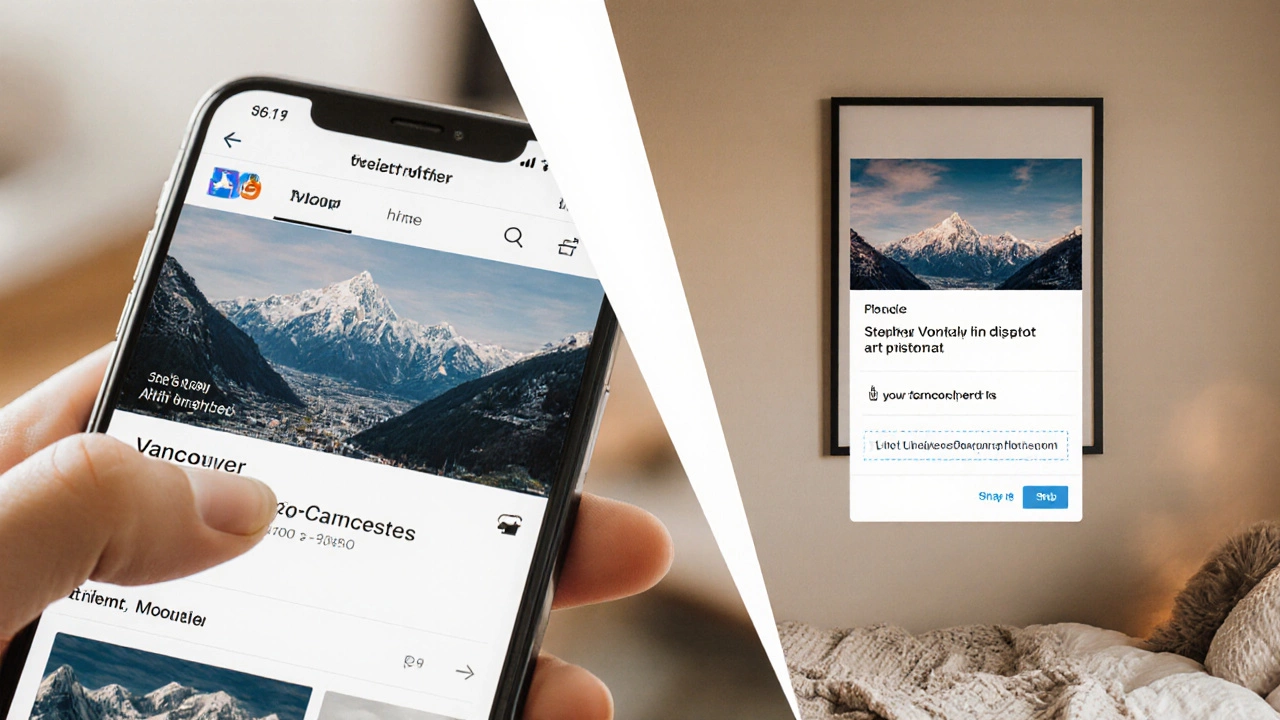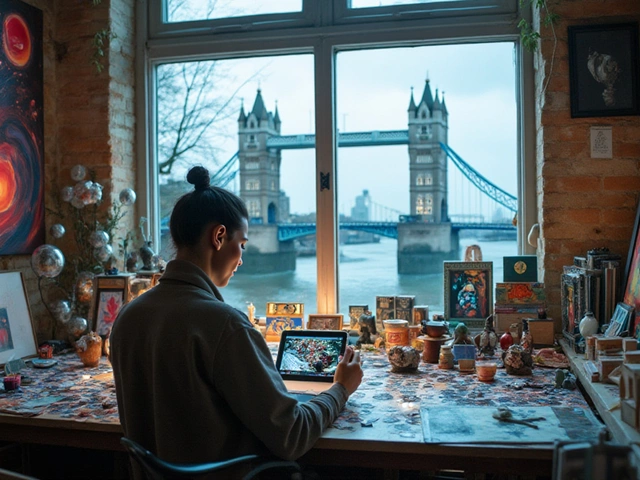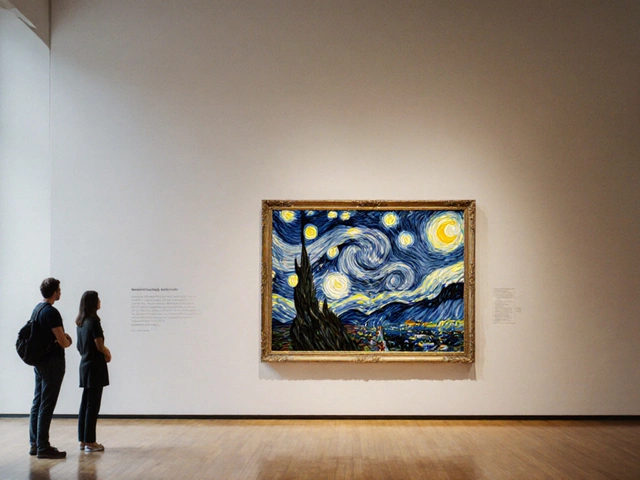Can you actually make money selling digital art? It’s not a trick question. Thousands of artists are doing it right now-some full-time, others as a side hustle. But it’s not magic. There’s no secret formula that turns a JPEG into a paycheck. Success comes from knowing where to sell, who’s buying, and how to stand out in a crowded space.
How much do digital artists actually make?
There’s no average salary. One artist sells 50 NFTs for $200 each and clears $10,000 in a week. Another spends months building a portfolio and makes $300 a month selling prints on Etsy. Both are real. The difference? Strategy.
According to a 2024 survey by ArtTactic, 38% of active digital artists earn over $1,000 per month from their work. But that number drops to 12% for those who only post on social media without a sales funnel. The top 5% make over $50,000 a year-not because they’re geniuses, but because they treat their art like a business.
What works? Selling limited editions. Offering bundles. Adding utility-like exclusive Discord access or future drops. Artists who just upload a file to OpenSea and wait rarely see results. Those who build communities, post consistently, and engage with buyers do.
Where do people buy digital art?
It’s not just NFT marketplaces anymore. The digital art market has split into three clear paths:
- NFT platforms like OpenSea, Foundation, and SuperRare. These are where collectors buy blockchain-backed art. Prices range from $5 to $50,000+. But gas fees, platform commissions (10-15%), and volatile crypto markets make this risky for beginners.
- Print-on-demand sites like Redbubble, Society6, and TeePublic. You upload your art, they print it on mugs, posters, or T-shirts. You earn 10-20% per sale. No inventory. No shipping. But competition is fierce. You need thousands of views to make $500 a month.
- Your own website with Shopify, Gumroad, or Ko-fi. This is where the real profit lives. You keep 85-95% of every sale. You control pricing, branding, and customer data. Artists using this method report 3x higher lifetime value per customer than on third-party platforms.
Many top sellers use all three. They release exclusive NFTs to build hype, then offer affordable prints to their email list. That’s how you turn one buyer into a repeat customer.
What kind of digital art sells best?
Not all digital art is equal. Some styles sell consistently. Others fade fast.
Here’s what’s moving right now in 2025:
- Minimalist abstracts - Clean lines, muted colors. Popular for home decor. Easy to print. Low production cost.
- AI-enhanced portraits - Not full AI art. Artists use AI to generate base textures, then hand-paint over them. Buyers want the human touch.
- Cityscapes and nature scenes - Especially ones with a dreamy, surreal twist. Think Vancouver fog over mountains, Tokyo neon at night. Local themes sell well to people who feel connected to the place.
- Animated art (GIFs, short loops) - Used as phone wallpapers, desktop backgrounds, or social media covers. High demand from Gen Z and millennials.
- Series-based work - A set of 5-10 related pieces. Buyers love collecting. You can price them as a pack or individually.
What doesn’t sell? Generic fantasy dragons, overused cyberpunk tropes, or art that looks like it was made in Canva. Buyers can tell the difference between effort and laziness.

How to start selling without spending money
You don’t need a big budget. You need a plan.
- Choose one platform to start - Pick either Etsy (for prints) or Gumroad (for digital downloads). Don’t spread yourself thin.
- Create 5 high-quality pieces - Not 50. Five that you’re proud of. Make sure they’re high-res (300 DPI, 4000px+ on the longest side).
- Write clear, honest descriptions - Don’t say “beautiful art.” Say “This digital print is perfect for a bedroom wall. Comes as a high-res PNG, ready to print at any local shop.”
- Use hashtags that work - #DigitalArtForSale, #ArtOnEtsy, #BuyDigitalArt. Avoid #Art, #DigitalArt. Too broad.
- Share on one social platform - Instagram Reels or TikTok. Show the process. Time-lapse your painting. People buy from people, not files.
One artist in Toronto started this way. She posted 3 minimalist forest scenes on Etsy. Within 6 weeks, she had 12 sales. She reinvested $50 into Instagram ads targeting people who follow art accounts. Her next month’s revenue? $870.
Common mistakes that kill profits
Most artists fail because they make these three errors:
- Selling everything as NFTs - Crypto wallets are hard to set up. Most buyers don’t have one. You’re limiting your audience.
- Not owning your customer list - If you only sell on Etsy or Redbubble, you never get their email. You can’t reach them again. Build your own list from day one.
- Underpricing - $5 for a digital file? That trains buyers to think your art is cheap. Charge $15-$50 for downloads. Offer a premium version with extra layers or a signed certificate for $75.
Another mistake? Waiting for “the right time.” There’s no perfect moment. The market moves fast. If you wait until you feel ready, you’ll miss the wave.

How to scale beyond the first sale
Once you get your first $100, what’s next?
- Bundle your work - “Winter Collection: 5 Digital Prints for $45” (instead of $15 each). Increases average order value.
- Offer customization - “Change the color scheme for $10 extra.” People love personalization.
- Collaborate - Team up with a musician or writer. Sell a digital art + audio pack. Creates a new product category.
- Run a waitlist - “Coming soon: 10 limited NFTs. Join the list to get early access.” Builds anticipation.
One artist in Vancouver started selling digital mountain art. After 6 months, she added a monthly “Art Drop” - a new piece for subscribers only. Now she has 427 paying members. Each pays $8/month. That’s $3,416 a month, passive income from art.
Is it worth it?
Selling digital art isn’t a get-rich-quick scheme. But it’s one of the few creative businesses where you can start with $0, work from anywhere, and scale without hiring staff.
The key isn’t talent. It’s consistency. You don’t need to be the best artist. You need to be the most reliable one. Show up. Post. Engage. Improve. Repeat.
If you’re serious about making money, start small. Pick one platform. Make five pieces. Sell one. Then build from there.
It’s not about luck. It’s about showing up before the crowd does.
Can you make a living selling digital art?
Yes, but not overnight. Artists who treat digital art like a business-building an email list, offering bundles, and posting consistently-can earn $2,000 to $10,000+ per month. Most start small, with $200-$500 a month, and grow over 6-12 months. It’s a marathon, not a sprint.
Do I need to sell NFTs to profit from digital art?
No. NFTs are just one channel. Many artists make more money selling high-res digital downloads on their own website or prints on Etsy. NFTs come with high fees, technical barriers, and market volatility. Unless you’re targeting crypto collectors, focus on simple, direct sales first.
What’s the best platform to sell digital art in 2025?
For beginners: Etsy or Gumroad. Both have built-in traffic and simple payment systems. For higher profits and control: your own Shopify store. For collectors and premium pricing: OpenSea or Foundation. The smartest artists use a mix-low-cost prints to attract buyers, then upsell to digital downloads or NFTs.
How do I price my digital art?
Start with $15-$50 for a single digital file. Charge $75-$150 for a limited edition with a certificate. Bundle 3-5 pieces for $45-$80. Compare what similar artists charge on Etsy or Gumroad. Don’t undercut yourself-low prices signal low quality. Your goal isn’t to be the cheapest. It’s to be the most trusted.
Do I need to use AI to create digital art?
No. AI tools can help speed up texture creation or idea generation, but buyers value human creativity. Art that looks like it was made by a human-with visible brushstrokes, intentional imperfections, and emotional depth-sells better than fully AI-generated pieces. Use AI as a tool, not a replacement.
How long does it take to make your first sale?
With the right approach, you can make your first sale in under two weeks. Upload 3-5 pieces to Etsy or Gumroad, write clear descriptions, and post one short video showing your process on Instagram or TikTok. Most artists who get sales do it within 10-14 days. The delay isn’t the product-it’s the promotion.
Next steps? Pick one platform. Create five pieces. Post one video. Wait for the first buyer. Then do it again.


